Best Bass Fishing Rigs: The Complete Rigging Guide
One page to master the best bass fishing rigs—exact rigging steps, presentation options, ideal soft plastics, and tradeoffs for Carolina, Drop Shot, Ned, Neko, Punching, Texas, Wacky, and Weightless rigs.
Rig Chooser (At-a-Glance)
| Rig | Best for | Cover | Depth | Line | Typical Weight |
|---|---|---|---|---|---|
| Carolina Rig | Bottom-roaming fish, covering water | Sparse–moderate | 6–30+ ft | 30–50 lb braid → 12–20 lb fluoro leader | 3/8–1 oz |
| Drop Shot | Finesse, pressured/suspended near bottom | Open–light | 10–45+ ft | 10–15 lb braid → 6–10 lb fluoro leader | 1/8–3/8 oz |
| Ned Rig | Cold fronts & pressured fish with subtle bottom hops | Open–light | 2–20 ft | 10–15 lb braid → 6–10 lb fluoro leader | 1/32–1/8 oz mushroom |
| Neko Rig | Finesse + bottom contact, stand-up posture | Light cover, edges | 5–25 ft | 8–12 lb fluoro | Nail 1/32–3/32 oz |
| Punching Rig | Penetrating matted vegetation | Heavy | 2–10 ft | 50–80 lb braid | 3/4–2+ oz tungsten |
| Texas Rig | Weedless targeting almost anywhere | Light–heavy | 2–25 ft | 12–20 lb fluoro / 30–65 lb braid | 1/8–1 oz |
| Wacky Rig | Pressured, neutral fish, docks | Sparse | 2–20 ft | 8–12 lb fluoro | Weightless or 1/32–3/32 oz |
| Weightless Rig | Ultra-natural fall/glide | Light | 0–10 ft | 8–12 lb mono/fluoro or braid→leader | N/A |
Carolina Rig
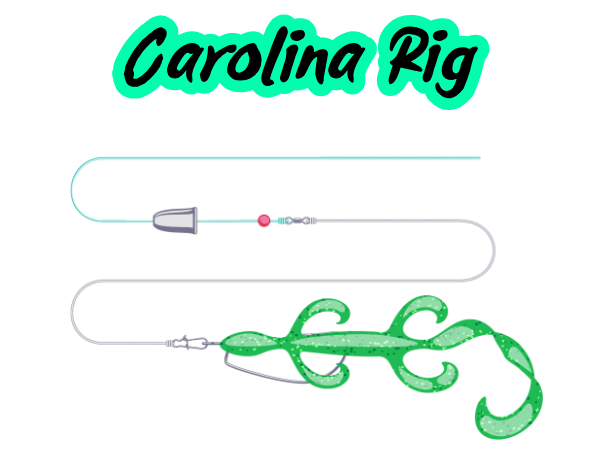
Sliding weight above a leader to keep your plastic just off bottom while maintaining contact—an elite tool among the best bass fishing rigs for covering offshore structure.
When to choose it
- Long points, shell beds, saddles, channel swings, deep flats with scattered grass/rock.
- Roaming bottom-oriented fish; pre-spawn through fall, slower in winter.
Gear
- Rod: 7’3”–7’6” MH–H fast; Reel: 7.x:1 casting.
- Line: 30–50 lb braid → 12–20 lb fluoro leader (2–4 ft).
- Terminal: 3/8–1 oz tungsten bullet/egg, bead, swivel, 2/0–4/0 offset/EWG.
Rigging
- Slide weight → bead → swivel onto mainline.
- Tie mainline to swivel; add 2–4 ft fluoro leader to the other end.
- Tie hook and Texas-rig your plastic.
Presentation
- Drag–pause–tick: long drags, pauses on hard spots, small shakes.
- Wind “strolling” across structure; up-current casts to sweep lanes.
Soft-Plastic Categories That Excel With This Rig
Creatures/Beavers Craws Stick Baits (5–6”) Lizards Finesse Worms (6–7.5”) Flukes/Minnows
Drop Shot
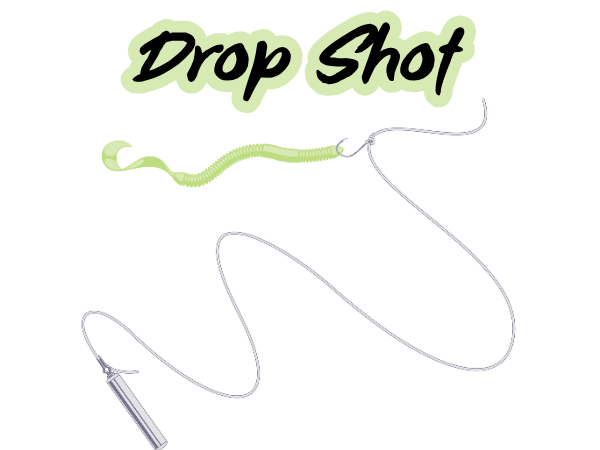
Hook above a tag-end weight to suspend the bait at an exact height—finesse king for pressured fish.
When to choose it
- Vertical sonar targets, edges of grass, rock transitions, deep humps, docks.
- Neutral/negative fish; precise depth control needed; year-round.
Gear
- Rod: 6’10”–7’2” ML–M XF spinning; smooth drag.
- Line: 10–15 lb braid → 6–10 lb fluoro leader.
- Terminal: #2–1/0 drop-shot/finesse hook; 1/8–3/8 oz cylinder/teardrop weight.
Rigging
- Tie Palomar, leave 18–36” tag; pass tag back through top eye to make hook point face up.
- Clip weight at desired distance (start 12–18”).
- Nose- or wacky-hook your plastic (weedless hook for light cover).
Presentation
- Vertical hover with micro shakes; cast-and-pendulum; cold-water dead-stick.
- Power-shot (baitcaster) with 3/8–1/2 oz for heavier cover.
Soft-Plastic Categories That Excel With This Rig
Finesse Worms (3.5–6”) Minnow Baits/Flukes Small Craws Goby-Style Hellgrammites/Bugs
Ned Rig
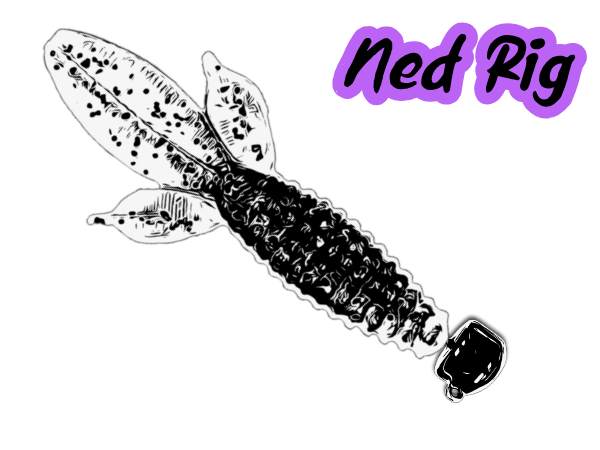
Small stickbait on a light mushroom head that stands up and glides—deadly when bass are pressured, cold-fronted, or just plain stubborn.
When to choose it
- After fronts, high pressure, clear water, and tough bites.
- Gravel/sand flats, bluff ends, edges of sparse grass, dock perimeters.
Gear
- Rod: 6’10”–7’2” ML fast spinning.
- Line: 10–15 lb braid main → 6–10 lb fluoro leader.
- Terminal: 1/32–1/8 oz mushroom head (light wire); 2.5–3.5” stick or small profile.
Rigging
- Thread the bait perfectly straight on a light mushroom or EWG Ned head.
- Expose the point for best hookups (texposed for light cover).
- Size down head for slower fall; upsize for wind/current/depth.
Presentation
- Do-nothing drag & shake; swim-glide-shake; dead-stick on bottom transitions.
- Short casts, count it down, maintain bottom contact without overworking it.
Soft-Plastic Categories That Excel With This Rig
Small Stick Baits (2.5–3.5”) Short Finesse Worms Compact Craws Goby-Style Micro Tubes
Neko Rig
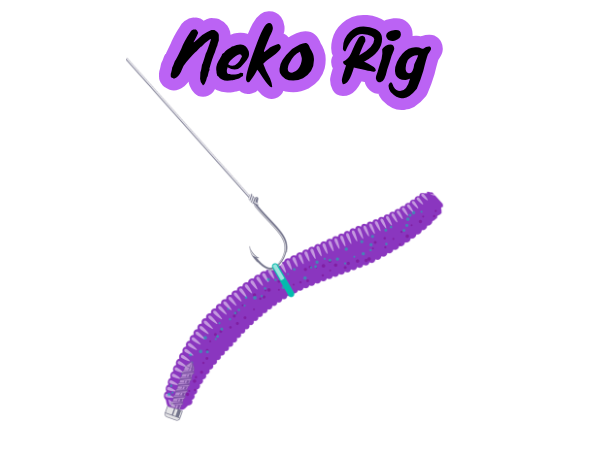
Wacky-style worm with a nail weight in the head for a head-down scoot and stand-up quiver.
When to choose it
- Grass edges, gravel, docks, laydowns, points; spring–fall.
- Neutral fish that still track bottom contact.
Gear
- Rod: 7’–7’2” ML–M fast spinning.
- Line: 8–12 lb fluoro (or braid → fluoro leader).
- Terminal: Size 1–1/0 wacky/Neko hook, O-ring, nail 1/32–3/32 oz.
Rigging
- Slide an O-ring at mid-body (or slightly toward the head).
- Insert nail weight into the head (flat end toward worm body).
- Hook perpendicular under the ring, point facing head; weed-guard optional.
Presentation
- Short hop–drags with pauses; dock skipping; stair-step down bluffs; micro-lift swims.
Soft-Plastic Categories That Excel With This Rig
Finesse Worms (4.5–6.5”) Slim Stick Baits Straight-Tail Minnow Worms Creature-Style Finesse Worms
Punching Rig
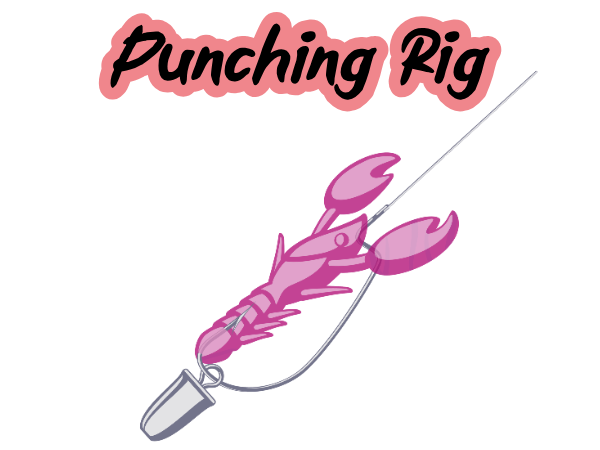
Heavy, pegged tungsten with a compact plastic and straight-shank flipping hook (often snelled) to penetrate mats and haul fish out.
When to choose it
- Matted hydrilla/hyacinth/milfoil, reeds; summer heat to early fall.
- Fish buried in shade/oxygen pockets; reaction on the initial drop.
Gear
- Rod: 7’6”–7’11” H–XH fast; Line: 50–80 lb braid.
- Terminal: 3/4–2+ oz tungsten, double bobber stops, 3/0–5/0 straight-shank (snell).
Rigging
- Thread two bobber stops → tungsten weight (point forward).
- Snell the straight-shank hook; peg weight firmly between stops.
- Rig a compact beaver/craw straight and tight to the shank.
Presentation
- Target dark holes, let fall, 1–2 pops, pull out; grid the mat methodically.
- Work outer 12–18" when light penetration is better.
Soft-Plastic Categories That Excel With This Rig
Texas Rig
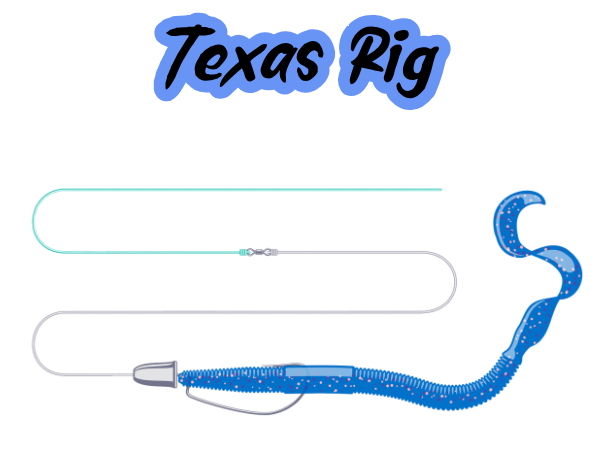
The classic weedless sliding-weight rig—arguably the most versatile of the best bass fishing rigs.
When to choose it
- Banks, laydowns, grass edges, brush piles, docks—nearly anywhere, year-round.
- Active to neutral fish; scale weight and plastic size as needed.
Gear
- Rod: 7’–7’5” MH–H fast; Line: 12–20 lb fluoro / 30–65 lb braid (heavy cover).
- Terminal: 1/8–1 oz tungsten bullet, 2/0–5/0 EWG or straight-shank; optional bobber stop.
Rigging
- Slide bullet (point toward rod) → optional stop → tie hook.
- Texpose your plastic (light skin-hook).
- Peg only when needed for precision/penetration.
Presentation
- Bottom hop–drag; swim-then-drop over grass; pitching to targets; slow-roll along bottom.
Soft-Plastic Categories That Excel With This Rig
Creatures/Beavers Craws Stick Baits (4–6”) Ribbon-Tail Worms (7–10”) Straight-Tail Worms Paddle-Tail Swimbaits
Wacky Rig
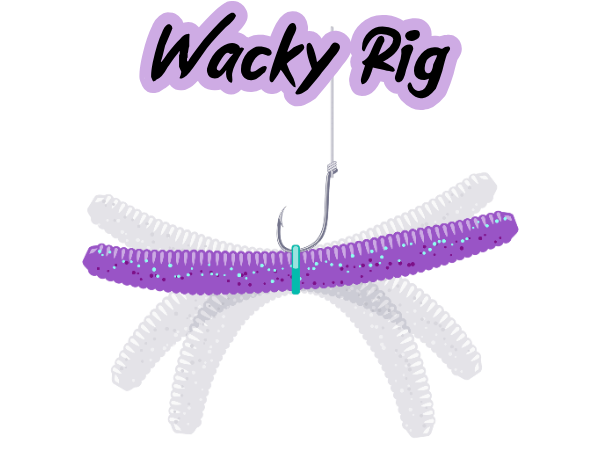
Stick bait hooked through the middle so both ends flutter—deadly subtle for pressured bass.
When to choose it
- Shallow flats, dock lines, shade pockets; spring–early fall; winter with long dead-sticks.
- Neutral/suspicious fish in clear water; calm conditions excel.
Gear
- Rod: 6’10”–7’1” ML–M spinning; Line: 8–12 lb fluoro (or braid→leader).
- Terminal: Size 1–1/0 wacky hook + O-ring/band; optional weed-guard; wacky jig 1/32–3/32 oz.
Rigging
- Slide an O-ring to midpoint; hook perpendicular under ring, point exposed.
- Add weed-guard in sparse cover; weighted wacky head for wind/depth.
Presentation
- Count-down fall (watch line), subtle twitches, dock skipping, weighted wacky for deeper piles.
Soft-Plastic Categories That Excel With This Rig
Stick Baits (4–6”) Slim Finesse Worms Compact Minnow Worms (weighted wacky)
Weightless Rig
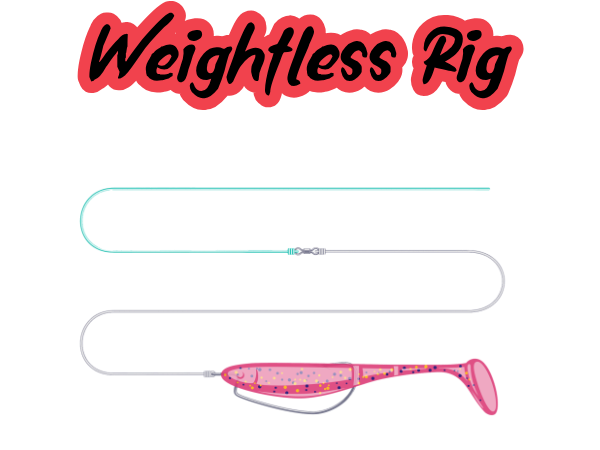
No added weight for maximum natural fall, glide, and hang time—minimalist but deadly shallow.
When to choose it
- Shallow flats, inside weed edges, emergent cover; post-front bluebirds.
- Spooky/cruising fish; spring to early fall; spawn perimeters.
Gear
- Rod: 7’ M spinning or casting (bait size dependent).
- Line: 8–12 lb mono/fluoro (mono floats more) or 20–30 lb braid→leader.
- Terminal: 2/0–4/0 EWG for stick/fluke/frog-style; small finesse hook for micro worms.
Rigging
- Choose hook that balances the bait; texpose lightly for weed resistance.
- Ensure perfectly straight rigging to glide true.
Presentation
- Twitch–pause (fluke); do-nothing stick bait; shallow grass skim; sight-led glides.
Soft-Plastic Categories That Excel With This Rig
Stick Baits (weightless) Fluke/Minnow Baits Small Straight-Tail Worms Frogs/Toads (buzzed)
Choosing Among the Best Bass Fishing Rigs
- Heavy mats? → Punching.
- Precise depth control for pressured fish? → Drop Shot.
- Tough bites after fronts? → Ned Rig.
- Bottom roaming on structure? → Carolina.
- General cover with weedlessness? → Texas.
- Finesse bottom with stand-up posture? → Neko.
- High-pressure docks/shade? → Wacky.
- Ultra-natural, shallow clear water? → Weightless.
FAQ
Which rig is most versatile for new anglers?
Texas Rig—weedless, precise, works almost anywhere with nearly any soft plastic.
What’s the best finesse rig in clear water?
Drop Shot or Wacky (weightless), depending on cover and wind.
How long should a Carolina leader be?
Start at 24–30”; lengthen in calm/clear water, shorten in wind/current.
When should I peg a Texas weight?
Peg in thicker cover or for a tight, precise fall; leave unpegged for a more natural separate fall.
Coming Soon: Rig Item
This item collection isn’t live yet. Want a heads-up when it is? Add your email below and we’ll notify you.



